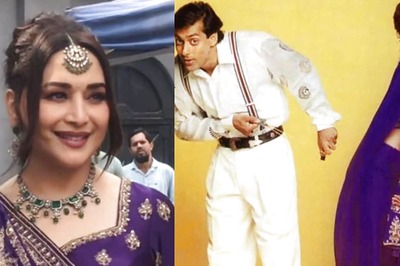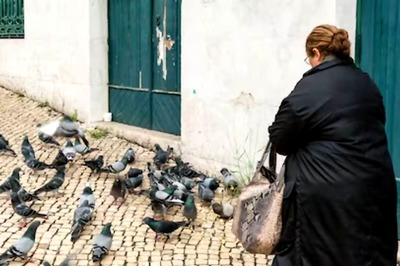
views
Facing the wrath of anti-incumbency against the Congress government at the Centre, which was embroiled in several cases of corruption, then Delhi Chief Minister Sheila Dikshit was looking for a panacea in 2013 to overcome adversities and come to power for the fourth time in the row. The development agenda of Dikshit had brought her back to power in 2003 and 2008.
The visionary leader that she was, she planned an overhaul of the city during the Commonwealth Games 2010 and had believed that the fresh wave of development would see her getting another term from the people. However, her development drive was drowned in the cacophony let loose by the Anna Hazare movement, whose product is the Aam Aadmi Party (AAP).
Then Congress member of Lok Sabha from West Delhi, Mahabal Mishra, had warned Dikshit about an impending defeat and had suggested to her that she could gamble by giving a large chunk of tickets to the party workers from Purvanchal (east UP and Bihar). Dikshit, who was never comfortable with Mishra, saw it as a subterfuge on the part of the Purvanchali leader to create a claim for himself as rival to her.
This was to prove costly for the Congress, which lost its Purvanchal vote bank lock, stock and barrel to the AAP, both in the 2013 and 2015 assembly polls. Arvind Kejriwal gave both space and tickets to the Purvanchalis and reaped a rich harvest. The Delhi assembly today has 13 MLAs from among the migrants from eastern UP and Bihar with Gopal Rai, a minister in the Kejriwal government; Sanjay Singh, a Rajya Sabha MP; and Dilip Pandey and Somnath Bharti, prominent faces of the party.
Learning lessons from the 2015 poll debacle, the traditional rivals in Delhi politics — the Congress and the BJP — have variously tried to woo the Purvanchali voters, with Manoj Tiwari coming to head the Delhi unit of the BJP and Kirti Azad being appointed the head of the campaign committee of Delhi Congress.
However, it’s unlikely that the Purvanchal voters would easily desert the AAP. If this prognosis needed any evidence, it came in the form of Mahabal Mishra’s son Vinay joining the AAP. A former vice-president of Delhi Youth Congress, Vinay was seen as somebody who would inherit his father’s political mantle. However, unsure of his father’s base remaining with him, he has tried to secure the family’s influence in the area by shifting to the AAP.
Mahabal Mishra, who had been the pioneer in steering Purvanchali votes, is a man out of action for now. While other parties are trying to make the best use of their Purvanchal leaders, Mishra — a man of many political battles — has been kept out of the campaign. Instead, the party has picked up Kirti Azad, who has switched over from the BJP, to lead its campaign committee.
Mishra is credited for providing identity and recognition to the Purvanchal population in Delhi. As first-term MLA in 1998, he pushed the agenda of establishing the Maithili-Bhojpuri Academy under Delhi government. For over a decade, he continued to be the voice of Purvanchal, both in the corridors of power and on the streets of Delhi, often leading demonstrations against its party.
According to estimates, 33.5 per cent of the total 1.46 crore voters across the 70 Vidhan Sabha constituencies are Purvanchalis. Most of the Purvanchali migrants are settled in areas that comprises of unauthorised colonies of Delhi. Amending Delhi’s Master Plan in 2001, allowing development work in these unauthorised colonies was an effort of some Purvanchali leaders, especially Mishra, who had served on the DDA as a nominee of Delhi assembly and later as Member of Parliament from west Delhi.
Today, BJP is eyeing the votes in these colonies by passing an act in Parliament giving ownership rights. Purvanchali community is today spread over 30 assembly seats living in the unauthorised colonies. However, despite the Centre giving some kind of a relief to the occupants of these colonies, a lot would depend on the number of Purvanchali candidates that BJP is able to field.
This especially given the fact that in the 2017 municipal polls, despite a popular matinee idol with the migrant tag appended on him as party president, BJP did not move much beyond its areas of influence namely among the Punjabi and Bania communities. The rivals of Tiwari within the BJP have repeatedly raised questions about his ability to garner migrant votes.
The party’s victory on all the seven seats in the 2019 Lok Sabha is solely credited to Prime Minister Narendra Modi as BJP’s vote share for the first time in the political history of the city not just crossed 50 per cent but jumped to 56. Ordinarily, BJP has got 32 to 36 per cent votes in the city. Their loss in 2015 assembly polls was due to the Congress polling abysmally low percentage of votes, adding to AAP’s vote share, and victory in 2017 municipal polls was due to the Congress’s vote share showing a remarkable rise, thus cutting into AAP’s vote share.
However, with the death of Sheila Dikshit and absence of Ajay Maken from the campaign, the Congress may not be able to retain the recovery of vote base, which started with 2017 municipal polls and maintained momentum during 2019 Lok Sabha polls. In such a situation, AAP would have an upper hand.
(The writer is a senior journalist and political analyst. Views expressed are personal)
















Comments
0 comment